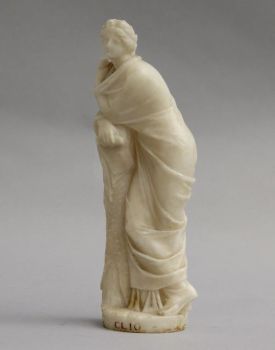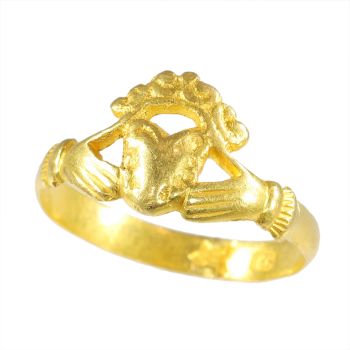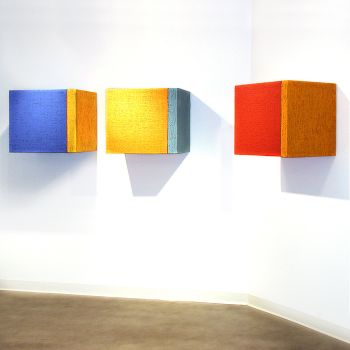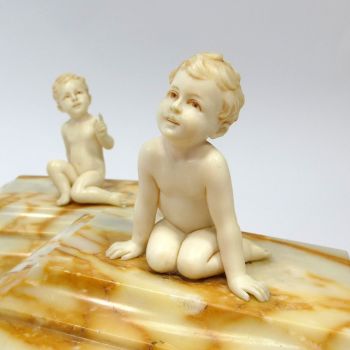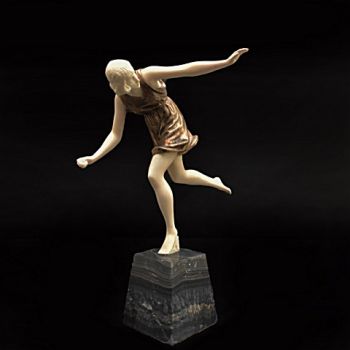A gem-set ivory sculpture of an Ottoman sultan 1700 - 1750
Artista Sconosciuto
ossogemmeAvorioPietra preziosa
25 cm
Prezzo su richiesta
Zebregs & Röell - Fine Art - Antiques
- A proposito di opere d'arteProbably Southern Germany, early 18th century, the base 19th century
The figure, which is dressed in a long, elaborately detailed partially gem-set robe with ornamental designs along the edges and is wearing a turban adorned with a feather and further inlaid with gemstones, is mounted on an octagonal base of later date, made of alternating panels of ivory and tortoiseshell.
H. 25.5 cm (incl. base)
Provenance:
Private collection, Brussels
This figure represents the fascination with ‘Turquerie’ in 18th-century Europe, where Ottoman themes were in vogue in art, design, and architecture. This rage was also called ‘Turkomania’. The depiction of this sultan shows the blend of admiration and exoticism that characterised European views of the Ottoman Empire during this period. Such sculptures were often produced for wealthy collectors who sought high-quality representations of Eastern rulers, catering to the demand. The present sculpture was rather exclusive, for the gems (amongst which diamonds) are typically Ottoman-cut. They might well have been spoils from the Battle of Vienna, where the Ottomans were defeated after two months of siege, in 1683. - A proposito di opere artista
Può succedere che un artista o un creatore sia sconosciuto.
Alcune opere non sono determinate da chi sono state realizzate o sono state realizzate da (un gruppo di) artigiani. Esempi sono statue dell'antichità, mobili, specchi o firme non chiare o leggibili ma anche alcune opere non sono affatto firmate.
Inoltre puoi trovare la seguente descrizione:
•"Attribuito a …." A loro avviso probabilmente opera dell'artista, almeno in parte
•“Studio di ….” o “Officina di” A loro avviso un'opera eseguita nello studio o nella bottega dell'artista, eventualmente sotto la sua supervisione
•“Cerchio di…” A loro avviso un'opera del periodo dell'artista che mostra la sua influenza, strettamente legata all'artista ma non necessariamente al suo allievo
•"Stile di..." o "Seguace di..." A loro avviso un'opera eseguita nello stile dell'artista ma non necessariamente da un allievo; può essere contemporaneo o quasi contemporaneo
•“Modalità di…” A loro avviso un'opera nello stile dell'artista ma di epoca successiva
•"Dopo …." A loro avviso una copia (di qualsiasi data) di un'opera dell'artista
•“Firmato…”, “Datato…” o “Iscritto” A loro avviso l'opera è stata firmata/datata/inscritta dall'artista. L'aggiunta di un punto interrogativo indica un elemento di dubbio
•"Con firma....", "Con data...", "Con iscrizione..." o “Riporta firma/data/iscrizione” a loro avviso la firma/data/iscrizione è stata aggiunta da qualcuno diverso dall'artista
Sei interessato ad acquistare questa opera d'arte?
Artwork details
Related artworks
- 1 - 4 / 12
 Com curadoria de
Com curadoria deDanny Bree
 Com curadoria de
Com curadoria deDanny Bree
Artista Desconhecido
Copo de beber Cristallo façon de Venise1600 - 1650
Preço em pedidoPeter Korf de Gidts - Antiquairs
1 - 4 / 24- 1 - 4 / 24
Artista Desconhecido
IMPORTANTE E RARA GRANDE PINTURA DE 'ESTILO DE EMPRESA' ÍNDIO EM MARFIM QUE REPRESENTA UM DESFILE1850 - 1900
Preço em pedidoZebregs & Röell - Fine Art - Antiques
 Com curadoria de
Com curadoria deDanny Bree
Artista Desconhecido
Holandeses em miniatura (Netsuke)1700 - 1900
Preço em pedidoZebregs & Röell - Fine Art - Antiques
1 - 4 / 24Abraham Salm
Twenty-four chromolithographs of Java after A. Salm”1801 - 1876
Preço em pedidoZebregs & Röell - Fine Art - Antiques
Dutch School
Chegada de um índio oriental holandês na Baía da Mesa18th century
Preço em pedidoZebregs & Röell - Fine Art - Antiques
Artista Desconhecido
An Amazon Indigenous Kayapo feather headdress1950 - 1960
Preço em pedidoZebregs & Röell - Fine Art - Antiques
Wolfgang Hugo Rheinhold
“Eritis sicut Deus”1900 - 1950
Preço em pedidoZebregs & Röell - Fine Art - Antiques
1 - 4 / 12





